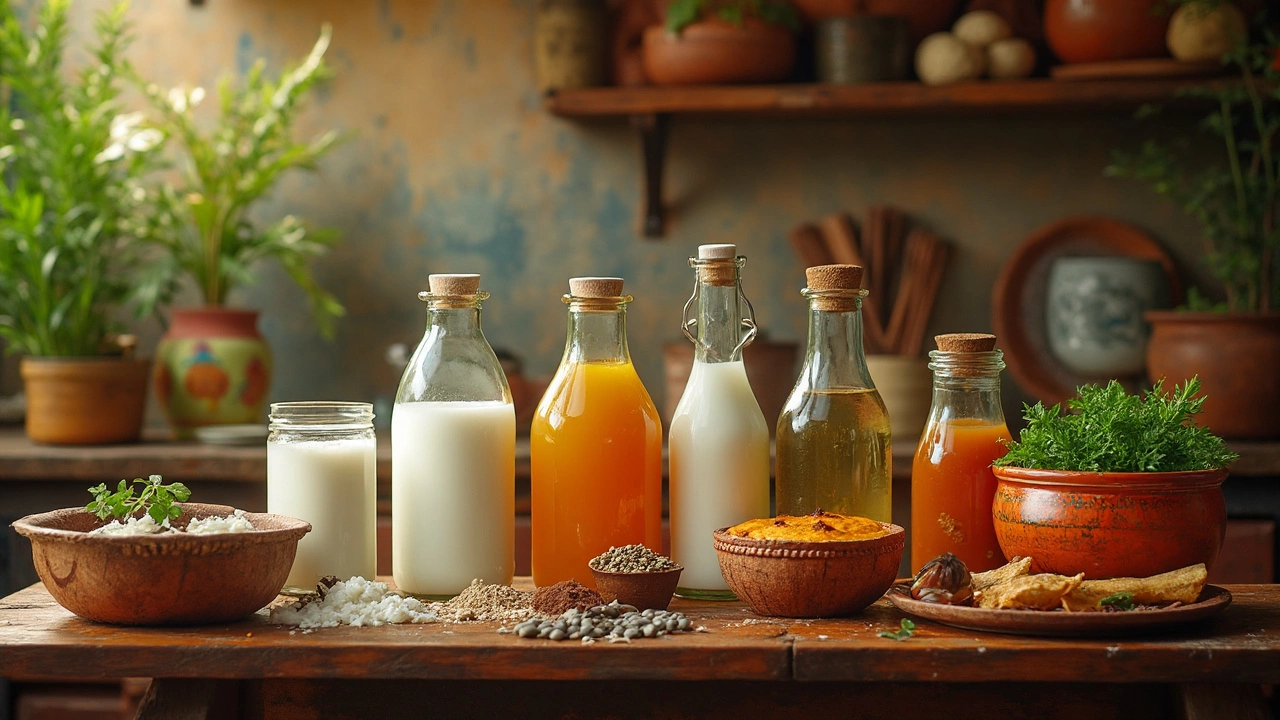Essential Curry Liquid Ingredients for Easy Indian Cooking
When you start a curry, the liquid you choose decides the flavor, texture, and how quickly it comes together. Most Indian dishes rely on just a few basic liquids – coconut milk, yogurt, tamarind water, stock or water – and every one brings its own character. Knowing which one to reach for saves you time, avoids surprises, and makes your sauce taste authentic.
Common Liquid Bases
Coconut milk is the go‑to for South Indian and coastal recipes. It adds creaminess and a subtle sweetness that balances spicy chilies. Use the canned version for a thick, rich base, or the thinner “coconut water” if you want a lighter sauce.
Yogurt gives a tangy, silky feel. Whisk it well before adding it to a hot pan – this prevents curdling. Full‑fat plain yogurt works best; Greek yogurt can be thinned with a little water if it’s too thick.
Tamarind paste or water provides that signature sour punch found in dishes like sambar and certain seafood curries. Mix one teaspoon of paste with a quarter cup of warm water, stir, and add it toward the end of cooking so the bright flavor stays fresh.
Vegetable or chicken stock boosts the depth of any curry without altering the core taste. A homemade stock made from simmered onions, carrots, and spices adds extra aroma, but store‑bought low‑salt versions work fine in a pinch.
Plain water is the simplest base. Pair it with a good spice mix and let the aromatics do the heavy lifting. Many classic dal recipes rely solely on water, letting the lentils and spices shine.
Tips for Using and Storing
1. Temper the heat: When you add yogurt or coconut milk, lower the flame to medium‑low. High heat can cause the liquid to split, leaving a grainy texture.
2. Balance flavors early: If you’re using tamarind, taste after a few minutes and adjust with a pinch of sugar or salt. The sourness can get stronger as it simmers.
3. Combine liquids wisely: Blend coconut milk with a splash of stock for a richer broth, or mix yogurt with a bit of water to thin it out without losing tang.
4. Store properly: Keep canned coconut milk unopened in a cool pantry. Once opened, transfer leftovers to an airtight container and refrigerate for up to three days. Yogurt should always stay chilled; you can freeze it for longer storage, though texture may change slightly when thawed.
5. Make your own tamarind water: Soak a small piece of tamarind pulp in warm water for 10 minutes, mash, and strain. Fresh tamarind tastes brighter than the bottled kind.
Having these liquids on hand lets you whip up a curry in minutes. Pull out a can of coconut milk, a tub of yogurt, and a squeeze of tamarind, and you’re ready for everything from a quick vegetable korma to a hearty chicken stew. Experiment with ratios – a splash of stock plus a dollop of yogurt can turn a simple sauce into a restaurant‑level dish. Remember, the right liquid is the secret sauce behind every great curry.
Best Liquids to Enhance Your Chicken Curry
Explore the variety of liquids you can use in chicken curry to elevate its taste and texture. Learn how common additions like coconut milk and yogurt affect the overall dish and discover less-known options for those adventurous cooks. This guide uncovers the impact each liquid has on flavor and consistency, ensuring you make a delicious curry every time.
